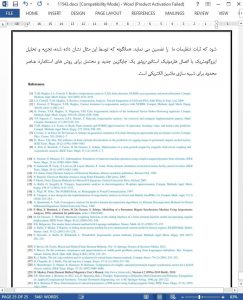Abstract
This work proposes Isogeometric Analysis as an alternative to classical finite elements for simulating electric machines. Through the spline-based Isogeometric discretization it is possible to parametrize the circular arcs exactly, thereby avoiding any geometrical error in the representation of the air gap where a high accuracy is mandatory. To increase the generality of the method, and to allow rotation, the rotor and the stator computational domains are constructed independently as multipatch entities. The two subdomains are then coupled using harmonic basis functions at the interface which gives rise to a saddle-point problem. The properties of Isogeometric Analysis combined with harmonic stator–rotor coupling are presented. The results and performance of the new approach are compared to the ones for a classical finite element method using a permanent magnet synchronous machine as an example.
1. Introduction
Isogeometric Analysis (IGA) was first introduced in [1,2] and can be understood as a Finite Element Method (FEM) using a discrete function space that generalizes the classical polynomial one. IGA has already been applied in different fields such as, e.g., mechanical engineering [3] and fluid dynamics [4]. A more elaborated overview of relevant application fields can be found in [5].
5. Conclusion
In this work IGA has been applied to model a PMSM. Since it is possible to parametrize circular arcs exactly, geometric approximations, from which the classical FEMs suffer, are avoided. A multipatch approach is used to model the rotor and the stator separately. The coupling between the two parts has been carried out by iterative substructuring or by using harmonic basis functions. To test the latter so-called harmonic stator–rotor coupling, a test case has been constructed for which the convergence of the spatial discretization has been shown. The harmonic stator–rotor coupling leads to a saddle-point problem for which our setting attains stability. As illustrated by the example, IGA with harmonic stator–rotor coupling is a new and promising alternative to standard finite element procedures for electric machine simulation.











